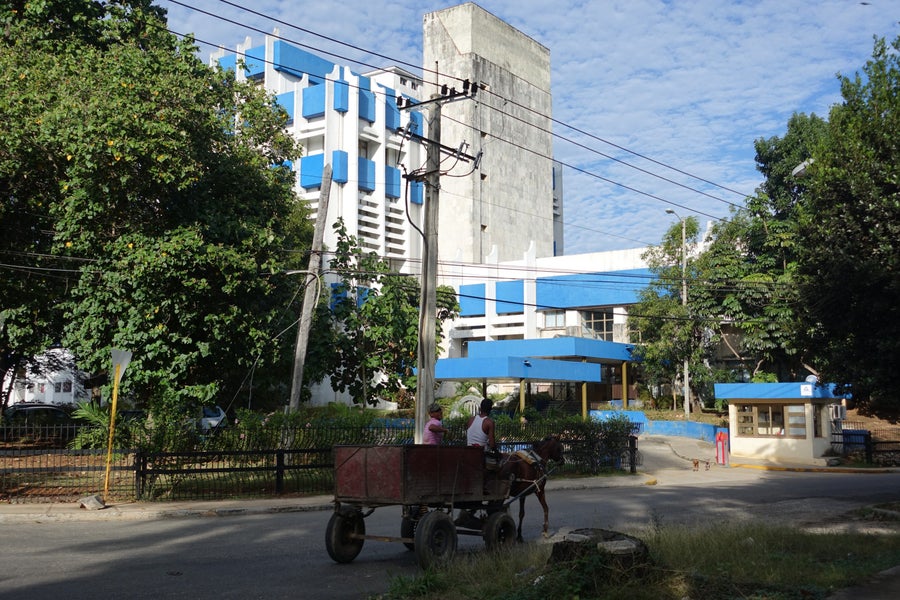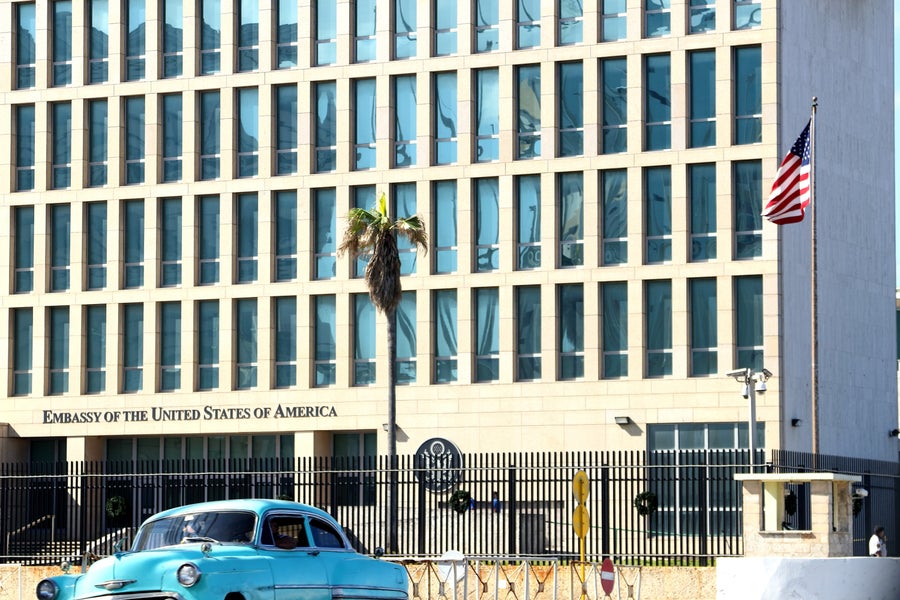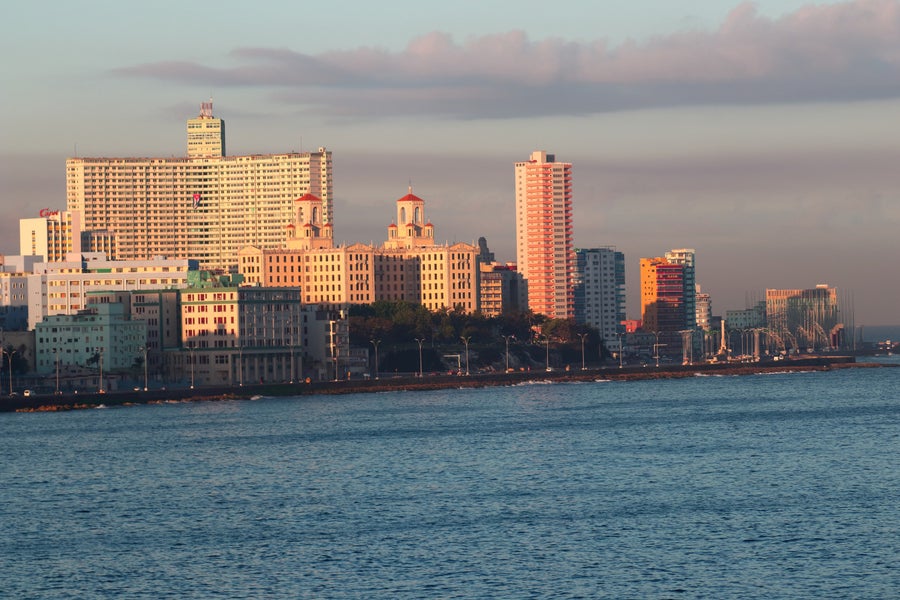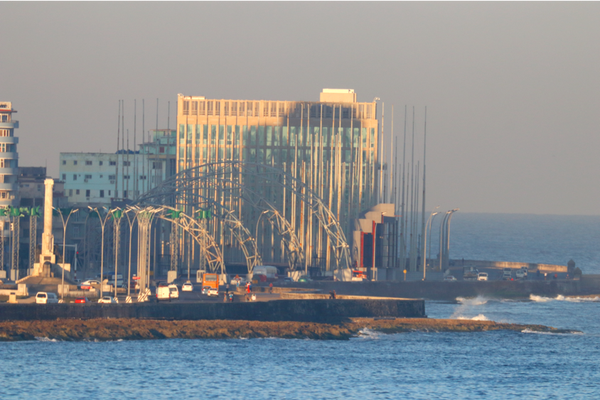HAVANA—Heated charges have flown back and forth for months between the two countries that bracket the Strait of Florida. U.S. State Department officials contended Cuba staged a sonic attack on employees of the American embassy, causing a variety of neurological symptoms. Cuba has not only denied such an attack ever took place but has also emphasized the physical impossibility of a sound wave causing neurological damage trained on such a distant target.
But physicians and scientists from both countries now appear to be in agreement on one critical point: Both sides acknowledge they are baffled as to what happened to 24 embassy employees who were diagnosed with mild traumatic brain damage between November 2016 and August 2017.
The latest development is a preliminary publication in JAMAThe Journal of the American Medical Association on Thursday, authored by the team of doctors at the University of Pennsylvania who examined 21 of the U.S. government employees. The study, commissioned by the federal government, found the patients had suffered from concussionlike symptoms—but without any blunt trauma to the head. The medical issues varied widely among the patients, and included cognitive difficulties and problems with balance, eye tracking, sleep disturbances and headache.
On supporting science journalism
If you're enjoying this article, consider supporting our award-winning journalism by subscribing. By purchasing a subscription you are helping to ensure the future of impactful stories about the discoveries and ideas shaping our world today.
Adding yet another element to the mystery, the new findings show normal MRI brain scans in all patients, and normal hearing in all but three individuals. The authors of the JAMA study also discount the likelihood of sonic injury, infection or toxic agents—and they even downplay the frequent suggestion of mass hysteria. Many of the findings in the new report echo a previous investigation carried out by Cuban officials.
The new report’s inconclusiveness does little to break the impasse. The State Department has issued multiple warnings in recent months that U.S. citizens should not travel to Cuba, because numerous embassy employees here had been targeted in attacks. The culprit was thought to be some form of unidentified sonic weapon trained on embassy employees, primarily in their residences near the post, including at the Capri Hotel.
The precise mechanism of the alleged attacks remains unclear. Between November 2016 and August 2017, some embassy staff complained of hearing strange sounds that targeted specific individuals—one person would hear them and another in the same room wouldn’t. By August 2017, physicians at the University of Miami and Penn had diagnosed 24 of 80 embassy employees with mild traumatic brain injury, likely caused by “trauma due to a non-natural source.” This report led to an angry response from U.S. lawmakers, including Sen. Bob Menendez (D–N.J.), who described the incidents as “brazen and vicious attacks” on diplomats.
Sen. Marco Rubio (R–Fla.), who chaired a January 9 U.S. Senate Foreign Relations Subcommittee hearing on the attacks, described the supposed sonic weapon as “very sophisticated technology that does not exist in the U.S. or anywhere else in the world.” Without knowing more about the causes of the incidents, Todd Brown, now–acting assistant director for international programs at the State Department’s Bureau of Diplomatic Security, testified he could not assure the safety of diplomats coming to Cuba.

The Cuban Neurosciences Center in Havana carried out an investigation of the alleged sonic attacks. Credit: R. Douglas Fields
Throughout the series of alleged attacks, however, questions have persisted as to how any sonic weapon could, without deafening levels of noise, have produced hearing loss and cognitive symptoms. In an attempt to address these questions, the Cuban government formed a technical committee of officials and academics to investigate the incidents; a report was issued late last year. At the Cuban Neurosciences Center, a towering concrete building situated near President Raul Castro’s heavily guarded estate well outside the tourist area, Mitchell Valdés-Sosa, general director of the center and an expert in auditory physiology who served on the technical committee, reviewed the report with me in late December.
The authors—a team of scientists including neuroscientists, physicians and physicists, among others—examined the available medical reports on afflicted embassy employees. The scientists and criminal investigators set up sound and radio-electronic spectrum surveillance devices at the U.S. embassy, the Capri Hotel and in residential areas where the diplomats lived.
During the investigation, the team gathered witness statements from embassy employees and residents, and performed medical exams and hearing tests on 20 people interviewed in the area surrounding the embassy. They analyzed hospital records in Havana for admissions of patients with medical complaints similar to those reported by embassy employees and for incidents of possible infections known to damage hearing. They also performed experimental tests and mathematical modeling of sound propagation and attenuation through walls and windows. They inspected buildings in the surrounding areas for unusual equipment, and searched customs records for evidence of any sound-emitting equipment brought into the country. On the basis of these data the committee found all the proposed explanations for the alleged sonic attack implausible and, in many cases, contrary to the laws of physics. The report addressed a number of hypotheses, listed below, for the alleged attack. Valdés-Sosa explained why the committee had dismissed them all:
Audible sound—A blast of sound loud enough to damage hearing, Valdés-Sosa says, would have been obvious to anyone near the embassy, and the source could not selectively target different individuals in the same room. No loud sounds were reported by witnesses or nearby residents, and none were detected by surveillance equipment. Physicists on the committee found even deafening sounds beamed into the buildings would be diminished by the walls and windows to a level well below that required to cause hearing loss.
Cell phone recordings of the alleged sonic attack were provided to an Associated Press reporter by an anonymous source in the State Department. But the sounds were identified by Yamile González Sánchez, an official at the Ministry of Public Health, and physicist Carlos Barceló Pérez, a professor at the National Institute of Hygiene, as those made by local insects, which they recorded on the scene. Moreover, the sounds, all in the audible range (about 7 kilohertz), would have overdriven the microphone—preventing it from recording—if they were loud enough to damage hearing.
Audiograms (tests of hearing sensitivity) would have been useful in pinpointing the precise sound used in a sonic attack, because loud noise inflicts hearing loss at the specific frequency of the damaging sound. But despite requests from the committee, the U.S. declined to provide them. Hearing tests of residents in the surrounding area, made by audiologist Alida Suárez Landrián, found no abnormalities.

Many embassy staff members have returned to the U.S. after reports of strange high-pitched sounds and 24 employees being diagnosed with mild traumatic brain injury. Credit: R. Douglas Fields
Sound outside the range of human hearing—The physics of sound propagation and the existing medical literature do not support the concept of a weapon that uses sound waves above or below the audible range. The long wavelength of infrasound, as is it known, is difficult to focus and requires very large speakers to generate—and it would have been difficult to conceal, Valdés-Sosa says. “Ultrasound [frequencies too high to hear] can be focused, but it dissipates very fast,” he notes. “It would certainly be attenuated by the walls of the room.” Furthermore, he adds, ultrasound is used medically—for example, to image a fetus—but is not considered damaging to tissue. The device routinely placed in contact with a pregnant woman’s body typically uses a gel to improve sound penetration through skin.
Infection and intoxication—Antibiotics and antimicrobial drugs can produce hearing damage. But Valdés-Sosa says the investigation could find no plausible way for such an agent to be administered selectively to people of such different ages who were affected in different places and times. The attacks are alleged to have occurred on multiple occasions between November 2016 and August 2017.
The Caribbean Basin is home to many viral infections—dengue, chikungunya, Zika—but none have produced this constellation of symptoms. Indeed, Charles Rosenfarb, medical director of the State Department’s Bureau of Medical Services, describes the wide-ranging symptoms as a “novel syndrome” never seen before.
The investigation was hampered by the cursory information provided to the Cubans by the U.S., Valdés-Sosa says. Rather than detailed medical records, the committee said it only received a single-page summary of complaints reported by embassy employees and family members—a list that included hearing loss, vertigo, tinnitus, memory problems, difficulty concentrating and visual disturbances. “If we had the medical records, maybe we could exclude [a toxic agent], but this hypothesis seems also unlikely,” Valdés-Sosa says. The committee said its request to interview and examine victims was denied.
Mass hysteria—Termed mass psychogenic illness by psychologists, mass hysteria has been suggested as the cause of the embassy employees’ complaints. A group of people can share a psychological state. For example, seeing someone else vomit may make another person feel nauseated. But diplomats and State Department employees are selected and trained to function in high-stress environments—including countries at war. Rosenfarb has ruled out the possibility of enough stress to produce sickness from a hysterical reaction.
Peculiar structure outside the embassy—An array of metal poles and awnings in a park outside the embassy, also in a direct line of sight with the Capri Hotel, was thought to be a possible antenna system for a sonic or microwave weapon. But the structures are simply flag poles erected to obscure an electronic sign on the embassy that formerly flashed information objectionable to Cuban authorities. If it had served as a sonic weapon, “it would affect everyone in the building,” Valdés-Sosa adds.
White matter damage— After the Cuban report was released, the Associated Press reported that magnetic resonance imaging scans by physicians at the University of Miami and Penn showed damage to white matter in the brains of embassy employees, and that this information would be published in a paper submitted to the Journal of the American Medical Association (JAMA). White matter is brain tissue comprised of bundles of cables (myelinated axons) that connect neurons (gray matter) to form circuits. But experts quoted in the AP article stated that sound does not damage white matter. Such damage would require violent concussive forces, something I learned in my own laboratory research on blast injury and myelin. The lead author of the investigation finding white matter damage in embassy employees was identified by the Miami Herald as Michael Hoffer, a University of Miami ear, nose and throat specialist and former U.S. Marine physician. Hoffer referred my inquires to the University of Miami Press Office, which declined comment, unable even to clarify whether a manuscript showing white matter injury in the U.S. diplomats had been submitted for publication. At this point, no medical evidence of white matter damage is known to have been reported.
The position of U.S. officials on the issue is still unclear. Officials at the State Department press office declined to comment on the reported evidence of white matter damage, or on questions about audio recordings purported to be a sonic weapon matching cricket sounds, or the possibility of mass hysteria afflicting the diplomats. They replied that they had no comment beyond department spokesperson Heather Nauert’s statements at a December 7, 2017 press conference.

Mitchell Valdés-Sosa, at the Cuban Neurosciences Center in Havana, reads a summary of the investigation into alleged sonic attacks. He is the center’s chief executive, an expert in auditory physiology and a member of the committee that investigated the alleged attacks. Credit: R. Douglas Fields
“This is part of the same pattern,” Valdés-Sosa says. “Something is leaked to the press, but in such a vague way you can’t confirm it or de-confirm it.”He also wants to know why data in the report had not been shared with the Cubans. “If there was any evidence of a real attack by anybody,” he says, “the Cuban government would react strongly—and as a scientist I would be very worried. I think the word would have to be spread so people could protect themselves.”
In an editorial accompanying the article by the Penn team, Christopher Muth, Fishbein Fellow on the board of JAMA, and Steven Lewis, chief of Neurology at Lehigh Valley Health Network in Pennsylvania, wrote additional evidence must be obtained before reaching conclusions. The JAMA study depended on subjective reports made by patients and thus lacked the types of procedures brought to bear in a formal scientific study—it was not known, for instance, what the neurological status of the diagnosed patients was before they became ill. Many of the tests were only given to a small subgroup of patients. Just six patients received cognitive and neuropsychological tests. From a medical perspective, Muth and Lewis noted the range of symptoms is shared by many different medical illnesses apart from concussion.
Those concerns were echoed by Valdés-Sosa in an e-mail after reading the report: “The study has serious limitations,” he wrote, but he was more disturbed by how this information was released. “The most alarming consideration is that medical data was withheld from the Cuban side to protect the patient privacy, but then it goes directly to publication,” he added. The Cuban scientists never questioned that these individuals experienced a range of health issues, he noted, but this new information does not clarify the cause or causes; indeed, it complicates matters. “The argument for a ‘new syndrome,’ or even of a ‘health attack,’ is very weak.” He added: “The objective findings [for example, abnormal audiograms] are present in only very few of the cases, and are inconsistent. It is not possible to know if any of the results are due to preexisting diseases or if their prevalence is larger than expected for any group of persons of the same age. The published conclusion that all the diplomats ‘sustained injury to widespread brain networks’ was not demonstrated by the data presented.”
Some U.S. officials have suggested various theories for what might have happened. Rubio and others have suggested a rogue faction in Cuba could be responsible for the attacks. “People who think a rogue faction in Cuba is responsible do not know Cuba,” Valdés-Sosa says. “There is no rogue faction in Cuba.” In Cuba, often described as a police state, only the Communist Party is permitted by law—and an aggressive intelligence apparatus tracks and suppresses any dissident activity. Under direct questioning by Sen. Rubio in the Senate Hearing on the sonic attack, Francisco Palmieri, acting assistant secretary of the State Department’s Bureau of Western Hemisphere Affairs, testified that he has never heard of any reports from any U.S. diplomats of a possible rogue faction in Cuba.
The Cuban investigators do not question that some embassy employees became ill, but they say they can find no evidence this was caused by an attack. Embassy employees with military experience, Valdés-Sosa suggests, may have been exposed to loud blasts causing mild injury that worsens with age, resulting in tinnitus or sudden hearing loss as in Meniere’s disease, for example.
Who would have a motive to advance a false story? “I think it is people that the U.S. government listens to, who want to roll back Obama’s work with Cuba, and they are taking advantage of this,” Valdés-Sosa says, suggesting perhaps some embassy personnel became ill from natural or preexisting causes—but when U.S. officials told them a secret weapon was involved, their anxiety may have skyrocketed.
Many ordinary Cubans were also incredulous about the idea of an intentional attack, and insisted that their country is highly motivated to improve relations with their gigantic neighbor.
“Science fiction,” says a restaurant worker in Havana, using a phrase often heard on the streets of the capital when this issue comes up. And one night in a remote village, as people dance salsa to the rhythm of Congo drums in the town square, a professional dancer says to me about the idea of an advanced new weapon: “I invite Americans to live in Cuba six months. We don’t have anything. No internet, no weapons program, not even cars.” Another Cuban adds, “If we had such a weapon, which we don’t, why would we use it on embassy employees and their families? We would not need bombs. We would take it to Trump Tower.”
Back in Havana, a taxi driver in a 1942 Ford Fleetwood that jostles its rickety way through the streets in a predawn rain—the darkness pierced by one working headlight as the taxi driver squints through a streaky windshield—says point blank in broken English: “Story is false.”
“Who is responsible, then?”
“Donald Trump.”
Asked why the U.S. would entertain such false information, he twists his two extended fists as if breaking a branch and says, “to break la cuerda [the rope]” tying the U.S. and Cuba together.
The incident has also mystified some U.S. officials. “Very perplexing,” said Sen. Tom Udall (D–N.M.), after questioning Palmieri at the January 9 Senate hearing. “We need to be careful not to jump to conclusions until we know what really happened.” The same day, Secretary of State Rex Tillerson announced he would request an independent review board to investigate the matter.
Valdés-Sosa ends our meeting, reflecting aloud: “If this is a hoax, it is cruel to have these people living under a shadow for the rest of their lives. Establishing what happened is important not only for the two countries, but for the people involved. The only way to do it is to share scientific information.”

The U.S. embassy sits on a point of land extending into Havana Harbor (far right building). Diplomats reported hearing strange sounds in their residences in the nearby Hotel Nacional de Cuba and Hotel Capri. Credit: R. Douglas Fields
Time Line of Events Related to the Alleged Cuban Sonic Attacks
November 2016: Embassy employees first report strange sounds. The State Department concludes it was harassment.
December 2016–January 2017: Employees first visit the State Department medical unit.
February–April 2017: 80 employees are examined; 16 are determined to have suffered mild traumatic brain injury.
July 2017: The State Department’s Bureau of Medical Services convenes a panel of academic experts to examine case histories and medical records. They conclude victims suffer “trauma from a non-natural source.”
August 2017: The Center for Brain Injury and Repair at the University of Pennsylvania reevaluates the initial cases and later ones occurring until August 2017, bringing the total to 24 employees with mild traumatic brain injury.
